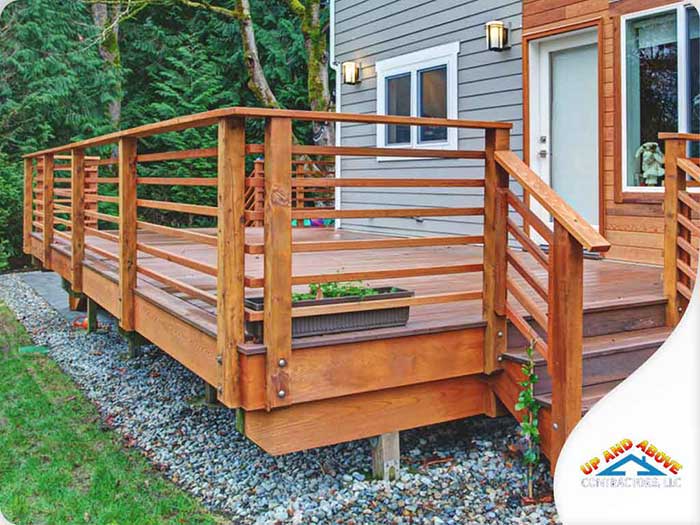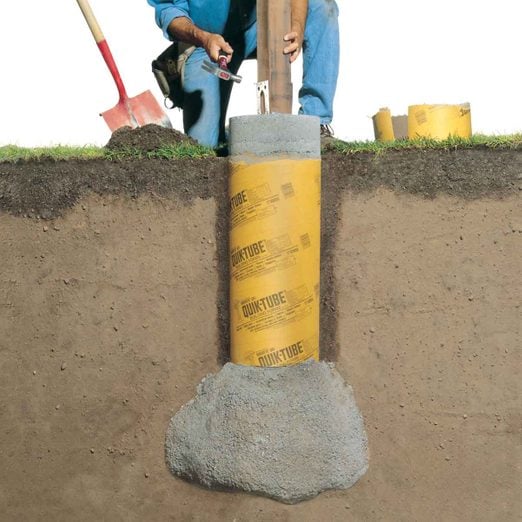Professional Tips for Installing Deck Footings to Assistance Your Outdoor Space
When it comes to constructing a deck, one of the most essential elements to think about is the installation of appropriate footings. These grounds are the structure upon which your outdoor room will certainly relax, providing security and support for years to come. What exactly does it take to install deck grounds properly?
Value of Correct Deck Grounds
Appropriate deck grounds are crucial for ensuring the stability and longevity of your outdoor area. When creating a deck, it is critical to take notice of the structure on which it will rest. Deck grounds give the required assistance for the whole framework and help distribute the weight uniformly - Deck Footings. Without strong and properly set up grounds, your deck may end up being unstable, leading to safety threats and expensive repairs.

In addition to security, proper deck grounds additionally add to the durability of your outdoor room (Deck Footings). Footings that are designed and constructed to hold up against the aspects and soil problems in your location will certainly assist protect against the deck from changing or clearing up gradually. By making sure the grounds are effectively sized and set up, you can decrease the danger of damages to the deck framework, prolonging its lifespan and lowering the need for pricey repair services or replacements

Selecting the Right Kind of Grounds
When selecting the ideal sort of footings for your deck, it is crucial to consider variables such as soil conditions, local building regulations, and the overall layout of your outdoor room. The sort of footing you select will certainly play a critical duty in making sure the stability and durability of your deck.
One common sort of ground is the concrete ground. Concrete grounds appropriate for most dirt problems and provide outstanding assistance for decks. They are normally set up below the frost line to protect against shifting and working out because of cold and thawing cycles. One more choice is helical piers, which are suitable for locations with unstable soil or high water tables. These piers are screwed into the ground and offer solid assistance for the deck.
Sometimes, you might require to utilize specific grounds, such as heap grounds or deep structures, if you are developing a multi-level or large deck. These footings are designed to distribute the weight of the deck over a larger area, making sure security and preventing resolving or sinking.
Before choosing a sort of ground, it is vital to seek advice from neighborhood building regulations and guidelines to guarantee conformity. In addition, think about the design and intended use your outdoor area. Elements such as the dimension, shape, and load-bearing needs of your deck will certainly affect the type of footing that is most appropriate.
Preparing the Ground for Footing Installation
To correctly prepare the ground for footing installation, it is vital to assess the soil problems and take needed steps to make sure stability and resilience of the deck. The first action is to excavate the location where the grounds will be installed.
When the location has actually been excavated, the following action is to portable the dirt. This can be done using a plate compactor or by utilizing a hand meddle. Condensing the soil helps to eliminate any spaces or air pockets, which can cause resolving and instability gradually.
After condensing the soil, it is necessary to lay a layer of gravel or smashed stone at the end of the excavation. This will supply water drainage and help to avoid water from merging around the footings, which can result in disintegration and instability.
Step-by-Step Overview to Setting Up Deck Footings
After properly preparing the ground for footing setup, the following action is to begin the procedure of setting up deck grounds. This detailed overview will certainly offer you with a clear understanding of just how to mount deck grounds for your outside area.
Figure out the location: Beginning by noting the placements of the deck footings using risks and string. Guarantee that the locations align with the design and layout of your deck.
Dig the holes: Use an article opening miner or an auger to dig the openings for the grounds. The deepness and diameter of the openings ought to remain in accordance with neighborhood building codes and the details needs of your deck her response design.
Level the openings: Make use of a level to make certain that the holes are dug to the correct depth and are level with each various other. (Deck Footings)
Add crushed rock: Location a layer of crushed rock at the base of each hole to boost water drainage and protect against the wood from decomposing.
Insert the footings: Put the footings into the openings, making certain they are degree and plumb. Utilize a level and a gauging tape to guarantee accuracy.
Safeguard the footings: Pour concrete into the openings around the footings, loading them to the top. Make use of a message degree to ensure the grounds continue to be level as the concrete sets.
Allow time for healing: Let the concrete remedy according to the manufacturer's guidelines before continuing with the deck building and construction.
Usual Blunders to Prevent During Footing Installment
One essential aspect to think about throughout the setup of deck footings is avoiding common blunders that can jeopardize the stability and long life of your outdoor area. While deck grounds may appear like a straightforward and simple part of the building and construction procedure, forgeting certain elements can bring about pricey repair work and possible safety and security dangers down the line.

Additionally, disregarding to install proper drain actions can cause water to gather around the grounds, bring about rot, decay, and the eventual weakening of the deck's structure. Furthermore, using the wrong kind of footing material or failing to appropriately safeguard the footings can jeopardize their architectural stability.
To prevent these errors, it is vital to talk to a specialist or comply with market guidelines to ensure correct footing installment. By doing so, you can make certain the security and durability of your outdoor room, offering a risk-free and satisfying setting for many years ahead.
Conclusion
In verdict, mounting appropriate deck grounds is vital for the security and longevity of your outdoor room. By choosing the best kind of footings and effectively preparing the ground, you can ensure a solid click now structure for your deck. Following a step-by-step guide and preventing usual errors throughout footing installment will better boost the durability and security of your deck.
Correct deck footings are necessary for guaranteeing the stability and longevity of your outside space. The grounds offer as a link in between the ground and the deck, allowing the weight of the deck and its occupants to be dispersed uniformly into the dirt.One typical type of footing is the concrete ground. Insert the grounds: Put the grounds into the openings, making certain click this site they are level and plumb. Secure the grounds: Put concrete into the holes around the grounds, filling them to the top.